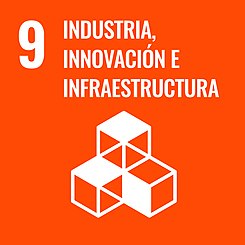Technological watch
"New markets are actually old markets" - Bio-based News -
“New markets are actually old markets. Therefore, the wheel does not have to be reinvented, only the focus has changed due to political developments, such as in the case of the European Packaging Directive”, explains Dr. Asta Partanen, expert for biocomposites at the nova Institute, with regard to the packaging industry. In the interview she describes how she assesses the market development for biocomposites and how the competition between glass fibres and natural fibres is shaping up.
Biocomposites play an important role in the circular economy. How can this importance be anchored even more firmly in the application sectors?The idea of using more renewable carbon – that is, carbon from biomass, direct CO2 use or recycling – should be more strongly communicated and promoted. Some countries are even already discussing corresponding targets. Many basic materials from composites are already established. What new developments do you see?Recently, the use of recycled polymers and fibres (by-products or post-consumer) has increased. The share of agricultural waste fibres such as flax from linseed or straw, cocoa fibres, coconut fibres, etc. has increased. What else can the composite industry learn from the packaging industry?New markets are actually old markets. This means that the wheel does not have to be reinvented, only the focus has changed due to political developments such as the European Packaging Directive. Since the use of disposable packaging is severely restricted by this regulation, solutions are now being sought with a reusable approach. Such an approach was previously the norm. One example is the reusable cutlery for on the move, which is made from sustainable wood fibres and bio-based PP. The reusable approach is an attempt to find a sustainable alternative to conventional plastic cutlery, which will be banned in the EU from 2021. Many similar solutions can also be found in other markets/industries, e.g. for take-away catering. The future will show whether biocomposites for packaging will become established as a sustainable solution. Glass fibres require a comparatively low primary energy requirement for production and can be a strong competitor depending on the growing conditions of the natural fibres. Against this background, please describe your bioeconomic cycle approach for composites.Natural fibres have an even lower primary energy requirement, even if fibres with different properties cannot be directly compared methodically – but the composites produced with them can. Haufe and Carus (2011) state, for example, that hemp fibre composites save 10-50% greenhouse gas emissions compared to their fossil-based counterparts. Furthermore, natural fibres offer extended options for recycling and reuse of composites compared to glass fibres, as they do not break during recycling, i.e. they are only slightly shorter and can be biodegraded. More importantly, however, this gives companies the opportunity to add an additional feature to their products based on the emotional performance of the “GreenPremium”. It is part of the overall product and is appreciated by end consumers in consumer products. The automotive and construction sectors in particular are interested in showing that the materials they use are “green”. Hemp fibres are so far the only natural fibres on the world market that are available with an ISCC PLUS sustainability certification. The nova-Institut has been a partner of Composites for Europe for several years. Please give us a small foretaste of the main topics you will present this year.Our newly founded initiative for renewable carbon, or “Renewable Carbon Initiative”, aims to herald the end of the fossil age of chemicals and plastics. Fossil carbon is to be completely replaced by renewable carbon, i.e. carbon from alternative sources: biomass, direct CO2 use and recycling. Only in this way can chemicals and plastics become sustainable, climate-friendly and part of the closed loop economy – a part of the future!
One of the three sources of renewable carbon can be made accessible through recycling. Both mechanical and chemical recycling already provide technologies that can address a variety of waste streams. In particular, developments in the field of chemical recycling are currently very dynamic in terms of the establishment of SMEs, policy development and investment. For this reason the nova-Institut takes the opportunity to publish a technology and market study on this topic in autumn.
The “Renewable Carbon Initiative” addresses the core problem: Companies are encouraged to focus on phasing out fossil resources and use renewable carbon instead. The initiative aims to spread this message, provide information, bring companies together and develop policy recommendations.
And this also answers your initial question: in the case of composites, our focus is on composites that contain as much renewable carbon as possible. This can be achieved through wood and natural fibers, and also through bio- or CO2-based polymers or recyclates. To part one of the interview
Source: Composites Europe, press release, 2020-08-05.
One of the three sources of renewable carbon can be made accessible through recycling. Both mechanical and chemical recycling already provide technologies that can address a variety of waste streams. In particular, developments in the field of chemical recycling are currently very dynamic in terms of the establishment of SMEs, policy development and investment. For this reason the nova-Institut takes the opportunity to publish a technology and market study on this topic in autumn.
The “Renewable Carbon Initiative” addresses the core problem: Companies are encouraged to focus on phasing out fossil resources and use renewable carbon instead. The initiative aims to spread this message, provide information, bring companies together and develop policy recommendations.
And this also answers your initial question: in the case of composites, our focus is on composites that contain as much renewable carbon as possible. This can be achieved through wood and natural fibers, and also through bio- or CO2-based polymers or recyclates.
Source: Composites Europe, press release, 2020-08-05.







